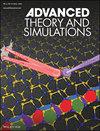Achieving High Optical Absorption in Thin Film Photovoltaic Devices via Nanopillar Arrays and Metal Nanoparticles
IF 2.9
4区 工程技术
Q1 MULTIDISCIPLINARY SCIENCES
引用次数: 0
Abstract
In this study, crystalline silicon nanopillars has been employed as a hexagonal array photonic crystal structure with low optical reflection, augmented by silver metallic nanoparticles ranging from 10 to 50 nm in diameter in order to achieve high absorption in thin silicon films, a critical factor for applications in photovoltaic devices. Initially, it has been begun with an optimized structure in terms of pillar filling ratio, pillar height, and diameter, as established in the previous study. This allows to obtain a hexagonal array of nanopillars with a surface characterized by low optical reflection. To enhance the optical absorption within the bulk of the silicon thin film, the optical scattering properties of silver (Ag) metallic nanoparticles (MNPs) has been harnessed. The integration of silver metal nanoparticles into the photonic crystal hexagonal nanopillar array involved introducing a cavity into the silicon pillar. Placing Ag MNPs near the bottom of the cavity prevented the degradation of the photonic crystal's ability to maintain low reflection within the desired optical spectrum (between 400–1100 nm). Comparison between the nanopillar hexagonal array structure with Ag MNPs and the bare silicon substrate revealed a remarkable 104.76 percent increase in optical absorption for a 1‐micron thick silicon bulk material. This triple hybrid structure exhibits tremendous potential in photovoltaic device applications, including solar cells and photodetectors, with the capacity to significantly enhance conversion efficiency.利用纳米柱阵列和金属纳米颗粒实现薄膜光伏器件的高光吸收
在这项研究中,晶体硅纳米柱被用作具有低光学反射的六方阵列光子晶体结构,并被直径为10至50纳米的银金属纳米粒子增强,以实现硅薄膜的高吸收,这是光伏器件应用的关键因素。首先,根据前期研究确定的矿柱充填比、矿柱高度、矿柱直径进行结构优化。这允许获得具有低光学反射表面特征的六边形纳米柱阵列。为了增强硅薄膜内部的光吸收,利用了银(Ag)金属纳米粒子(MNPs)的光散射特性。将银金属纳米颗粒集成到光子晶体六方纳米柱阵列中需要在硅柱中引入一个空腔。将Ag MNPs放置在腔的底部附近,可以防止光子晶体在所需光谱(400-1100 nm)内保持低反射的能力退化。通过比较Ag MNPs和裸硅衬底的纳米柱六方阵列结构,发现1微米厚硅块材料的光吸收显著增加104.76%。这种三重混合结构在光伏器件应用中具有巨大的潜力,包括太阳能电池和光电探测器,具有显著提高转换效率的能力。
本文章由计算机程序翻译,如有差异,请以英文原文为准。
求助全文
约1分钟内获得全文
求助全文
来源期刊

Advanced Theory and Simulations
Multidisciplinary-Multidisciplinary
CiteScore
5.50
自引率
3.00%
发文量
221
期刊介绍:
Advanced Theory and Simulations is an interdisciplinary, international, English-language journal that publishes high-quality scientific results focusing on the development and application of theoretical methods, modeling and simulation approaches in all natural science and medicine areas, including:
materials, chemistry, condensed matter physics
engineering, energy
life science, biology, medicine
atmospheric/environmental science, climate science
planetary science, astronomy, cosmology
method development, numerical methods, statistics
 求助内容:
求助内容: 应助结果提醒方式:
应助结果提醒方式:


